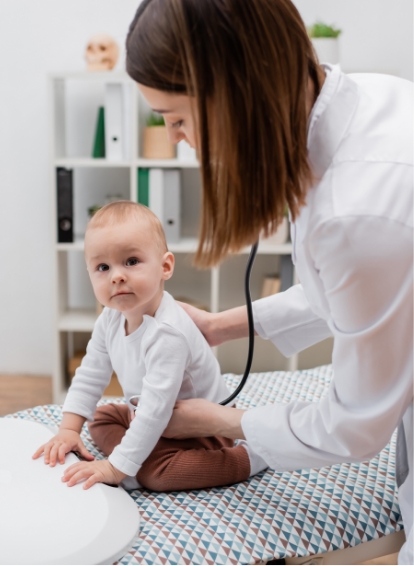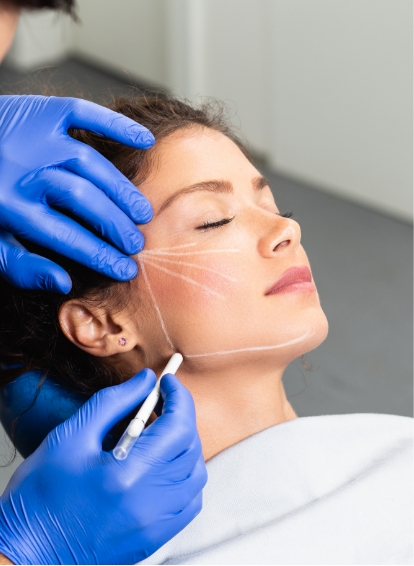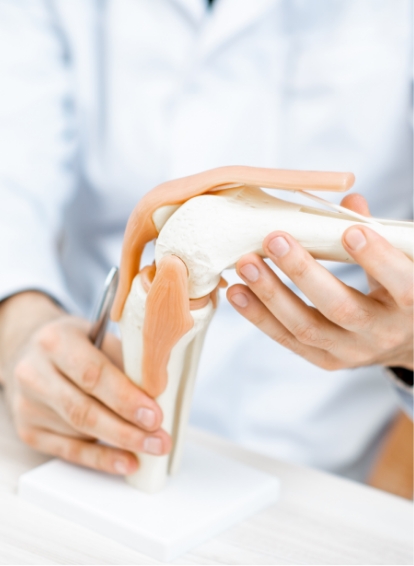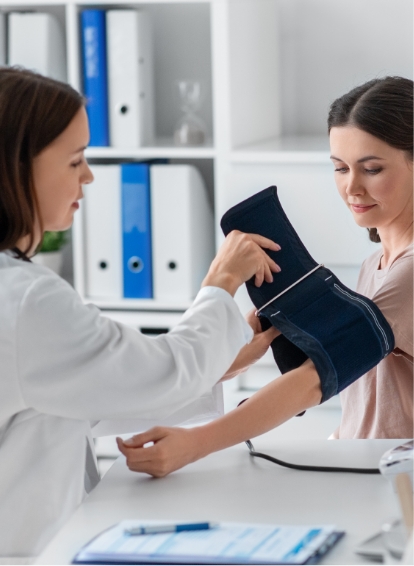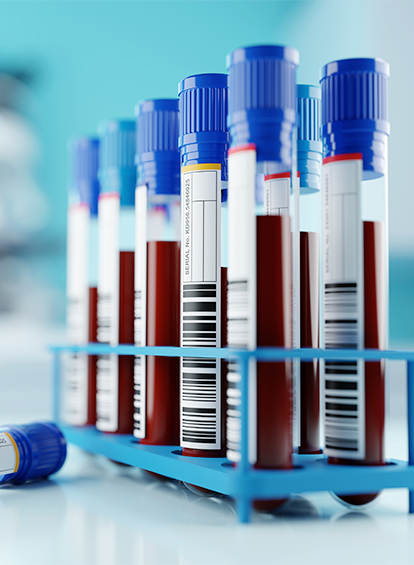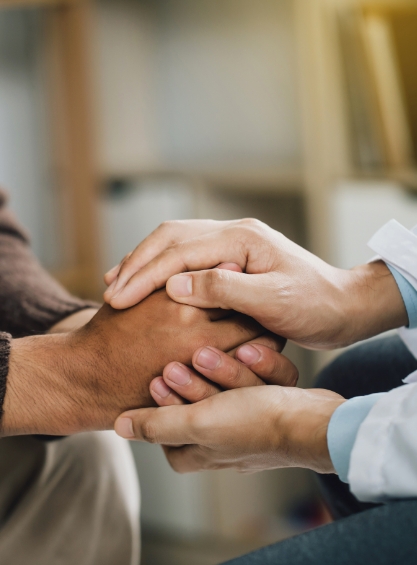Sports & Non-Surgical Orthopaedic Treatments
Lower Back Pain
Lower back pain is a common condition that affects many individuals, often resulting from poor posture, muscle strain, or underlying conditions like herniated discs or arthritis. This type of pain can vary from a mild ache to severe discomfort that limits daily activities and can interfere with sleep.
At The Clinica, our specialists in Sports & Non-Surgical Orthopaedics are dedicated to providing effective treatment for lower back pain, using personalised approaches to relieve pain, improve mobility, and support a long-term recovery.
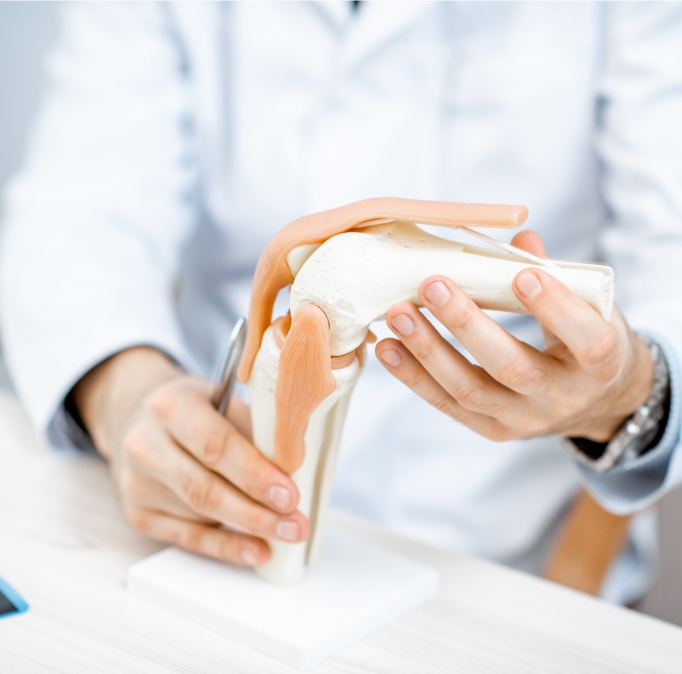
What is it?
Lower back pain, also known as lumbago, refers to discomfort or pain in the lumbar region, the area between the ribcage and pelvis. This pain can result from strain on the muscles and ligaments supporting the spine or from more complex spinal issues like disc degeneration or nerve compression. Lower back pain can be acute, lasting for a few days to weeks, or chronic if it persists for more than three months.
The symptoms of lower back pain can vary widely, including sharp or dull aches, stiffness, and reduced range of motion. In some cases, the pain may radiate to the hips, buttocks, or legs, a condition known as sciatica, which typically indicates nerve involvement. Lower back pain may also be accompanied by muscle spasms, numbness, or tingling, particularly if nerves are compressed.
This type of pain is one of the most frequent complaints among adults and can significantly impact quality of life. Proper diagnosis and treatment are essential to prevent further complications and support a return to normal activities.
Book an appointment
Additional Information

Causes of the condition
The causes of lower back pain can be divided into mechanical issues, lifestyle factors, and underlying medical conditions. Mechanical issues, such as muscle strain, ligament sprains, and herniated discs, are common sources of lower back pain. These injuries often occur due to lifting heavy objects improperly, sudden movements, or prolonged sitting.
Lifestyle factors, including poor posture, physical inactivity, and obesity, can place additional strain on the lower back. Lack of core strength and flexibility can contribute to muscle imbalances that affect spinal alignment and increase the risk of pain. Psychological factors, such as stress and anxiety, can also play a role, leading to muscle tension and discomfort in the lower back.
Underlying medical conditions, including arthritis, spinal stenosis, and scoliosis, are chronic sources of lower back pain. These conditions affect the structure and function of the spine, leading to ongoing pain and limited mobility. Identifying the cause of lower back pain is essential for effective management and long-term relief.
Tests that can be done to confirm the condition
Diagnosing lower back pain begins with a physical examination and an evaluation of symptoms, medical history, and lifestyle factors. The clinician may assess your posture, range of motion, and areas of tenderness to identify possible sources of pain. Observing the way you move can provide valuable information about any structural or mechanical issues.
Imaging tests, such as X-rays, MRI, and CT scans, are commonly used to confirm the diagnosis and assess the extent of damage within the lower back. X-rays help identify bone abnormalities, such as fractures or signs of arthritis, while MRI provides detailed imaging of the soft tissues, including discs, muscles, and nerves. MRI is particularly useful for detecting herniated discs or nerve compression.
In some cases, nerve conduction studies may be conducted to assess nerve function and detect potential nerve damage. Blood tests may also be recommended to rule out infections or inflammatory conditions that could be contributing to the pain.
Effective treatments
Effective treatment for lower back pain is tailored to each patient’s needs, focusing on relieving pain, improving flexibility, and strengthening the muscles supporting the spine. Initial treatment often includes rest, application of ice or heat, and over-the-counter pain relievers to manage mild pain and reduce inflammation. Modifying activities that aggravate the pain is essential for initial recovery.
Physical therapy is a key component of lower back pain management, with exercises designed to strengthen the core, improve flexibility, and correct posture. Core-strengthening exercises help stabilise the spine, reducing the risk of future strain and providing better support for the lower back. Stretching routines target tight muscles, while strengthening exercises build endurance, making the lower back more resilient.
In cases of chronic lower back pain, non-surgical treatments like corticosteroid injections, spinal decompression, or radiofrequency ablation may provide longer-lasting relief. These treatments help reduce inflammation and alleviate pressure on the nerves. For severe cases where conservative treatments have not been effective, surgical intervention may be considered, particularly for herniated discs or spinal stenosis. Post-surgical rehabilitation is essential to restore mobility and support recovery.
Book an appointment for an initial consultation
Booking an initial consultation at The Clinica is the first step toward managing lower back pain effectively. During this consultation, our specialist will conduct a thorough evaluation, discuss your symptoms, and review your medical history to identify potential causes and contributing factors. A comprehensive physical examination of the lower back will help determine the source of pain and assess its severity.
If necessary, imaging tests will be arranged to confirm the diagnosis and guide treatment. Based on these findings, a personalised treatment plan will be developed, focusing on pain relief, rehabilitation, and long-term strategies to support lower back health and prevent recurrence.
Frequently Asked questions
Recovery time varies depending on the cause and severity of the pain. Acute cases may improve within days to weeks, while chronic pain may require ongoing management over months.
Yes, most cases of lower back pain improve with non-surgical treatments, including physical therapy, lifestyle adjustments, and pain management techniques. Surgery is typically considered only for severe or unresponsive cases.
Core-strengthening exercises, gentle stretching, and low-impact activities like walking can help alleviate lower back pain and improve stability. A physical therapist can provide a tailored exercise plan.
Imaging tests like X-rays or MRI may be recommended if the cause of pain is unclear or if symptoms persist, providing insights into the underlying structure and possible causes of the pain.
Maintaining good posture, strengthening the core, avoiding prolonged sitting, and practicing safe lifting techniques can help prevent lower back pain from recurring.
Specialised Clinics
General Enquiries
Please send your enquiry to us and our Practice Manager will be in touch shortly. Alternatively, if you would rather speak to us or your enquiry requires our urgent attention, please call us on 01344 946363.
